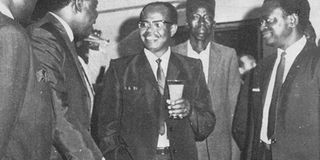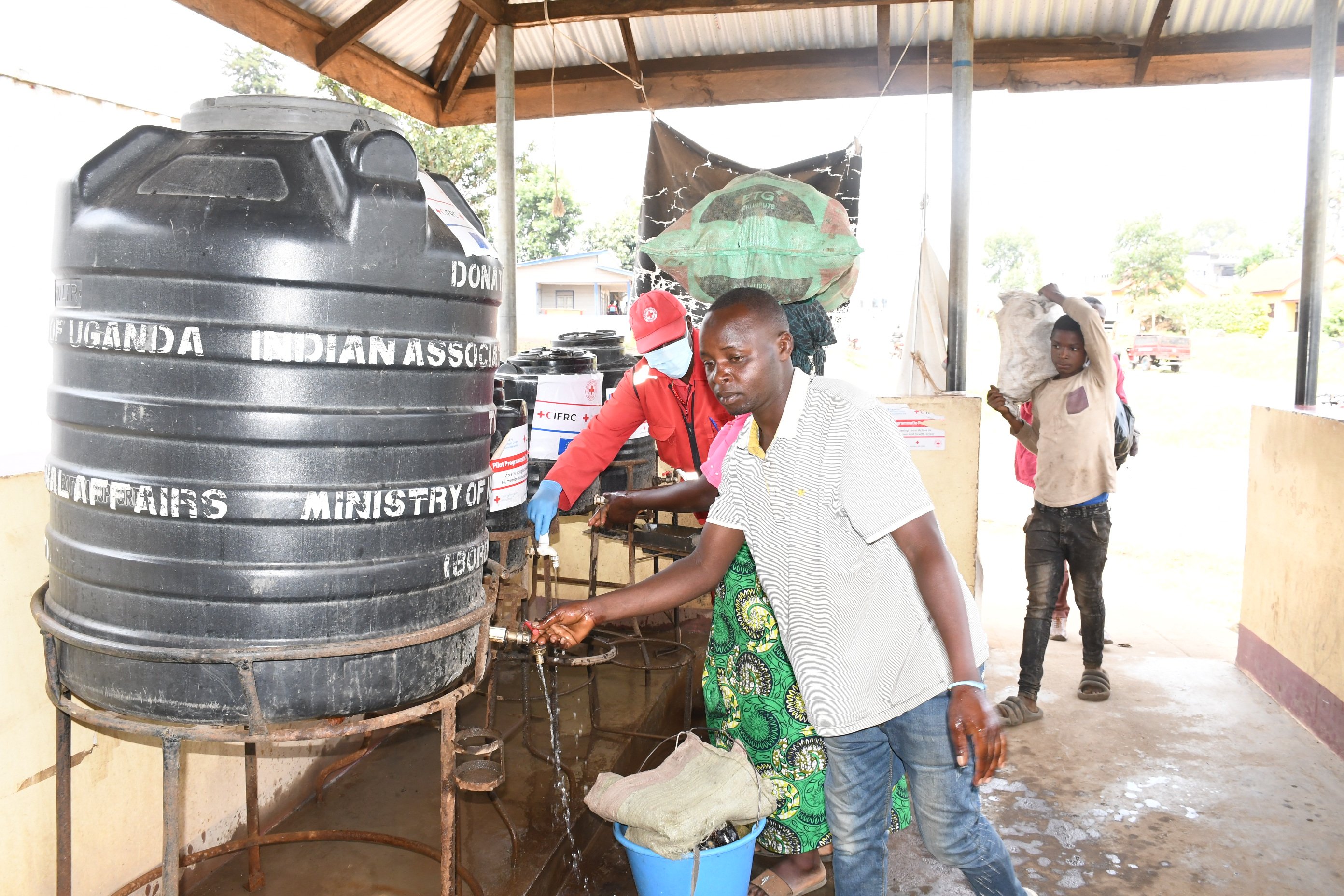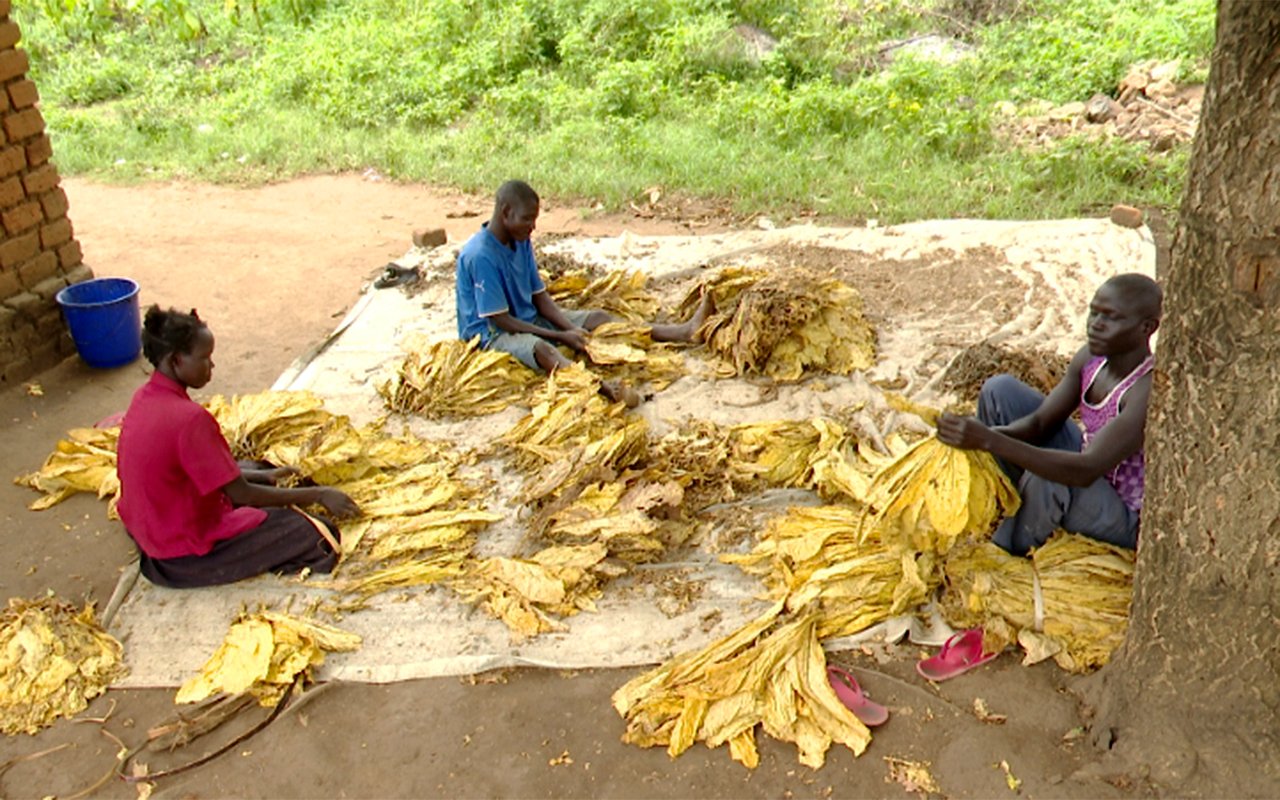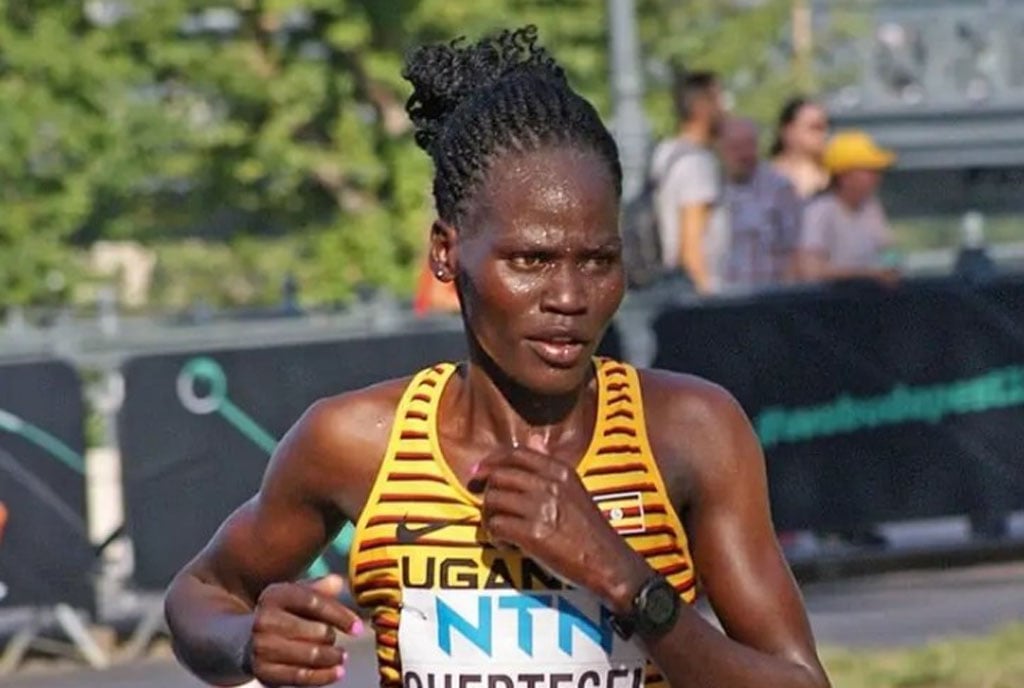Prime
Shaban Nkutu: Uganda’s solid achiever

Shaban Kirunda Nkutu (C), a minister in the post-independence government, chats with his colleagues. COURTESY PHOTO
What you need to know:
Profile. In a two-part series, we bring you the life and contributions of Shaban Kirunda Nkutu to Uganda’s infrastructure and health sector, 39 years after his death.
When the Milton Obote-led regime passed decrees advocating nationalisation in 1970, several private businesses became partially or fully owned by the government.
This move saw the expansion of and growth of those businesses and as well as the sprouting up of others.
Steering the establishment of several such parastatals and infrastructure was Shaban Kirunda Nkutu. Nkutu disappeared and died at the violent hands of Idi Amin in 1973 with one of the most outstanding personal records of public service and national development in the history of Ugandan Ccabinet ministers.
As Minister of Health (1966-67), he oversaw the construction of 21 regional referral hospitals and the establishment of a free, quality, national healthcare system.
Prior to this period, Uganda’s referral hospitals were limited to Mulago and the Grade B hospital at Entebbe.
As Minister of Works, Housing, Transport and Communications, he laid the foundation for Uganda’s post-independence infrastructure, transport and communications networks.
Nkutu, who inherited a murram national road system, was the father of Uganda’s national tarmac road network, the national landline telephone and postal services system and the [then] new Entebbe International Airport.
Early Life
He also oversaw the construction of regional airfields, quality bus and rail transport services and the national housing and construction Corporation, which built Crested Towers, Serena Hotel and the International Conference Centre as well as housing estates across the country, including the Bugolobi and Bukoto Housing estates in Kampala.
He also oversaw the establishment of East African Airlines and the ports and ferries on Uganda’s lake shore, at Port Bell and Jinja, in addition to the Kalangala and Lake Kyoga ferries.
Nkutu was born in Nakibembe Village, Bugweri County, Iganga District on November 15, 1930. His parents were Hajj Ausi Kirunda and Zafalan Namuwaya.
The Nkutu family belongs to one of the 11 royal clans of the Basoga known as the Baisemenha who are direct descendants of the Bunyoro royal family. The clan traces its roots to the migrant Munyoro Prince Kakaire, son of Omukama Agutamba Nyamutukura, then King of Bunyoro. The Baisemenha clan arrived in Busoga with an army and put down its roots in Bugweri County.
The young Nkutu, a 6th generation descendant of the Omukama, became the beneficiary of a clan tradition handed down by Baisemenha clan leaders of earlier generations to focus the very limited financial resources available – not on their biological heirs – but on the education and career development of whichever young man best embodied Bugweri’s best hopes in its future generations to provide national leadership in Uganda.
Following this tradition, Prince Muwaabe - who had assumed leadership of Bugweri after its last pre-colonial Chief Menha Munhuulo had been deposed and exiled to Kenya by the British – decided to groom not his own son Salim Kivejinja but instead another young Prince, Zirabamuzaale who became Secretary General of Busoga.
Zirabamuzaale was one of the first three Africans in the Legislative Council, along with Sir Apollo Kaggwa of Buganda and Nyangabyaki of Bunyoro. Zirabamuzaale groomed and placed the clan’s hopes for representation and a role in post-independence Uganda on his nephew Shaban Kirunda Nkutu, whose mother had managed to get him to complete primary school. Under Zirabamuzaale, Nkutu was mentored for national leadership.
The young Shaban Nkutu studied at Mwiri College and was trained at Kibuli and Makerere College as a teacher. He was one of the first Muslims in Uganda to get a secular education. During his 20s, he served as a teacher and later as a headmaster at Bwala, in Masaka.
Across Africa in the 1950s, it was common for educated African teachers, then a rarity, such as Julius Nyerere of Tanzania, to emerge as nationalist leaders. It was during this period that Nkutu became involved with the nationalist movement for Uganda’s independence, first through the Uganda National Congress (UNC) and later the Uganda Peoples Congress (UPC). He had earlier met Uganda’s future Prime Minister Milton Obote during secondary school at Mwiri and the two were close friends.
National leadership
On the eve of independence, in April 1962, Nkutu, with the backing of Prince Zirabamuzaale and the populous and Baisemenha clan, stood for and was elected to Parliament on the UPC ticket to represent Busoga South East constituency, which comprised of the present day Bugweri and Kigulu counties (Iganga District), Bunya County (Mayuge District) and the whole of Bugiri and Namayingo Districts.
He represented Busoga South East until the military overthrow of the Obote I government by Idi Amin on January 25, 1971.
One of the legacies of Shaban Nkutu’s service in cabinet is that most presidents of Uganda have appointed a Cabinet minister from his family. With Adoko Nekyon and others, Nkutu co-founded the National Association for the Advancement of Muslims, the precursor to today’s Uganda Muslim Supreme Council and was the lead advocate for secular education amongst Muslims.
As a political leader, Nkutu is mostly remembered for his service as Minister of Health in 1966 and as Minister of Works, Housing, Transport and Communications from 1967-71.
During his time in the Works Ministry, Nkutu was served by Permanent Secretary and Engineer in-Chief by Uganda’s pioneer African engineer, James Zikusooka, who died on January 30, 2012.
In September 2008, Zikusooka, long retired, wrote the following letter to the Mayor of Jinja Municipality: “I wish to formally recommend to Jinja Municipal Council, the re-naming of a road after the Late Hon. Shaban Kirunda Nkutu, M.P., who was one of the greatest sons of Jinja, Busoga and Uganda in the years following independence.”
“My late Minister initiated, planned, obtained funds for, oversaw the execution, completion, upgrade and/or maintenance of hundreds of infrastructure projects across Uganda...”
Zikusooka added: “Most of Uganda’s post-colonial modern infrastructure was put in place during the time Shaban Nkutu served as Minister of Works, Transport, Housing and Communications and very little new infrastructure has been built from scratch since that time.”
Infrastructural development
“During his one-year tenure as Minister of Health in 1966,” wrote Zikusooka, “Hon. Shaban Nkutu oversaw the completion of construction and successful opening of 21 modern district hospitals, covering all major regions of Uganda, giving most Ugandans their first proper access to modern medical facilities.
“From West Nile to Tororo, from Karamoja to Kanungu, from Masindi to Bugiri, from Ntungamo to Gulu, Bundibugyo to Soroti and Kumi, Masaka to Lira, Mbarara to Kisoro, very good hospitals were built and commissioned,” Zikusooka added.
He noted that prior to this achievement, there were virtually no referral hospitals in Uganda outside Kampala and Entebbe and “there have hardly been any new referral hospitals constructed by any successor government in the country for most of the last 45 years”.
As deputy Minister of Education, Nkutu created access to educational institutions and scholarships for Ugandans of all religions, especially Muslims and Catholics, who had been kept out of the public school system during the colonial period.
However, even as Nkutu’a achievements brought pride to his family and country, that celebration would be short-lived.
Continues Tomorrow.
=============================================================
• Almost all the tarmac roads built in Uganda after independence, beyond the Entebbe-Kampala axis
• Pakwach Bridge (West Nile, built from scratch))
• The New Entebbe International Airport (built from scratch, both runways and terminal, control tower e.t.c.)
• Soroti Flying School (from scratch)
• Airfields and aerodromes in most of the original 18 districts of Uganda (from scratch)
• International Conference Centre and Nile Hotel (now Serena Hotel and Conference Centre)
• The dual carriage-way from Jinja to Kakira
• Iganga-Tirinyi Road (first ever tarmac)
• The Pakwach-Arua Highway (West Nile)
• The Gulu-Pakwach road
* The Jinja-Kamuli highway (first ever tarmac)
• The Kampala-Mbarara-Ntungamo Highway (first ever tarmac)
• The Ntungamo-Kabale Highway (first ever tarmac)
• The Kampala-Mityana Highway (first ever tarmac)
• The Kampala-Gulu Highway (first ever tarmac)
• Most of the feeder roads in the coffee-cotton-matooke areas of Butembe and Bugabula in Busoga
• First Class Murram roads in all the areas of the country growing cash crops (coffee, cotton, tobacco, sisal and pyrethrum), where there was a Cooperative Union, stretching from West Nile, Acholi, Lango, Teso, Bugisu, Bukedi, Busoga, Buganda, Bunyoro, Ankole, Toro and Kigezi
• The Arua-Koboko Road (West Nile)
• The Busia-Tororo-Mbale-Soroti-Lira-Gulu highway (first ever tarmac)
• The railway from Busia to Gulu
• National Housing and Construction Corporation (from scratch)
• Kampala’s Crested Towers building (from scratch)
• Bugolobi Flats in Kampala (from scratch)
• Kampala’s Wandegeya Flats (from scratch)
• Kampala’s Bukoto Flats (from scratch)
• In virtually all district towns, the housing estates known as “Senior Quarters” and “Junior Quarters” built for new civil servants under the programme to Africanise Uganda’s Civil Service (from scratch)
• Dozens of Post Offices and telephone exchanges across the country and the extension of the national telephone system beyond Entebbe, Jinja and Kampala (from scratch)
• East African Airways (from scratch)
• Uganda Transport [Bus] Corporation, serving southern and western Uganda (from scratch)
• Peoples Transport [Bus] Company, serving northern and eastern Uganda (from scratch)
• East African Railways and Harbours Corporation
• The Port Bell railway link (from scratch)
• The Busoga railway loop (Iganga-Kamuli-Busembatia-Iganga) (from scratch)
• The Jinja pier (enabling cargo from Lake Victoria to be transferred to rail and road) (from scratch)
• The Kalangala ferry and ferries on Lake Kyoga and Lake Bisina in Teso (from scratch)
• Tarmac upgrade of the Kampala-Mukono highway and the highway from Mukono to Busia (from scratch)




